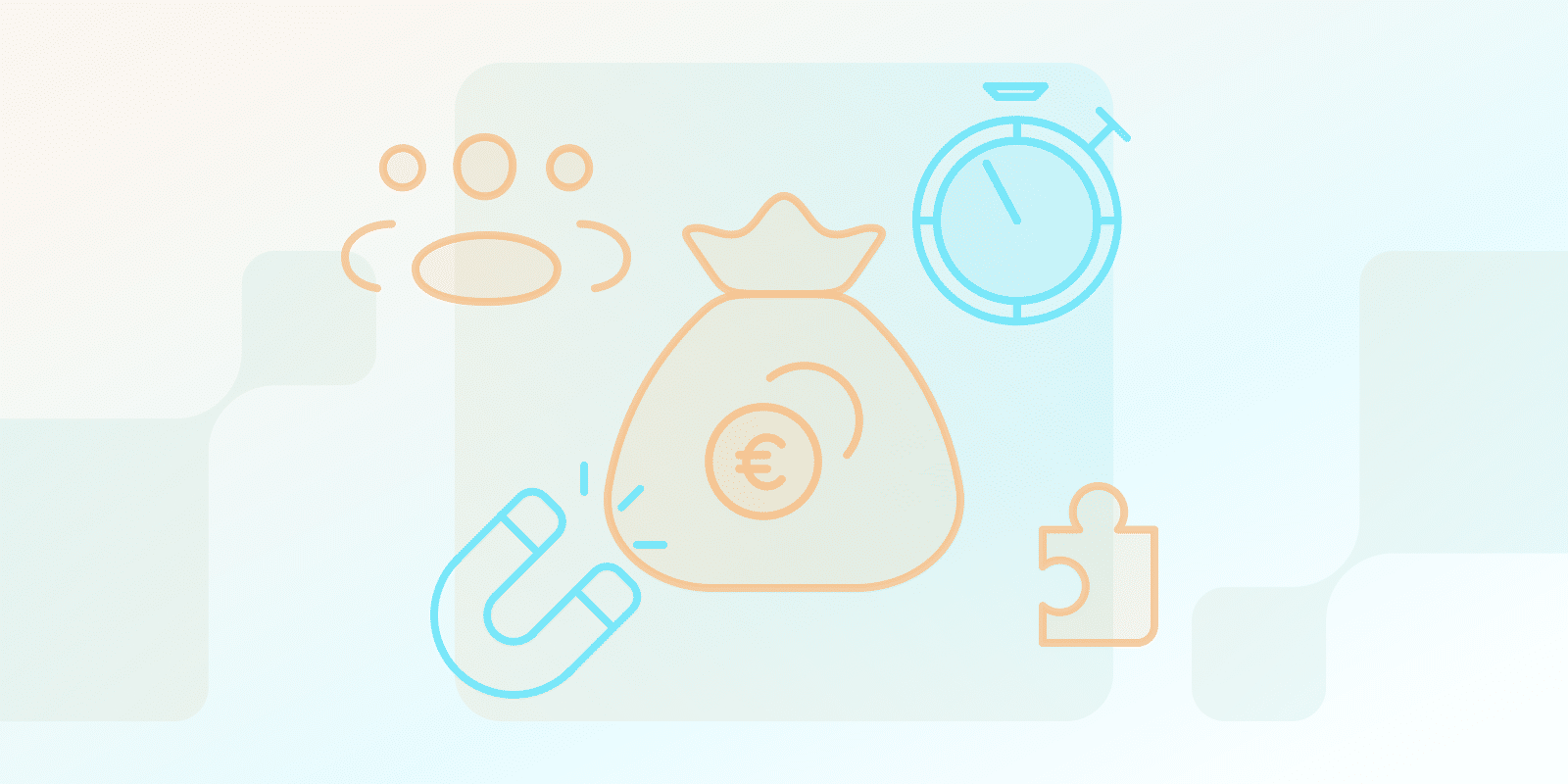SaaS Metrics and KPIs
What is Customer Acquisition Cost (CAC)?
Published: October 18, 2024
Last updated: February 4, 2025

What is Customer Acquisition Cost (CAC)?
Customer Acquisition Cost (CAC) is the term used to define the total cost of acquiring a new customer. This cost includes advertising, sales promotions, and any other measure aimed at turning a potential lead into a paying customer.
You should know your CAC to fine-tune your marketing efforts and manage available resources. The most common approach to CAC depends on the accounting style of an organization and the types of costs included in calculations.
What are the factors that affect customer acquisition cost (CAC)?
Across industries and business models, there are multiple of factors that go into customer acquisition cost (CAC). Such factors include:
- product and service complexity
- competition
- SaaS compliance regulatory rules
- the ratio of CAC to LTV
In the e-commerce industry, CAC has a wide range depending on the product, the audience, and the marketing approach. Organizations need to understand the factors that drive CAC for their industry to streamline spending on marketing and analyze marketing approaches, as well as growth strategies.
What are the advantages for companies when analyzing CAC?
Knowing the cost of acquiring customers allows companies to make well-informed decisions about marketing investments, customer acquisition strategies, and broader business initiatives.
Remember the following points when it comes to CAC benefits:
- Determine cost-efficient communication methods and channels for marketing activities.
- Provides guidance on the allocation of funds and the selection of suitable marketing investments.
- Acts as a basis for calculating customer lifetime value (LTV) and the return on investment (ROI).
While data collection and analysis are essential, they can be demanding and may necessitate significant resources.
CAC is subject to external factors such as market competition and the state of the economy.
How do I reduce customer acquisition cost (CAC), and how does it affect my business strategies?
Reducing customer acquisition cost (CAC) is a significant factor in business decisions as it can promote profitability and encourage efficient resource allocation.
This is because most, if not all, resources expended on marketing to new clients can be easily contained by narrowing the target from the general consumers to a defined group.
It is essential to target very specific consumer traits so that no marketing costs are incurred for the already established customers.
Understand that although it is vital to cut down on CAC, it should never be viewed in isolation. One has to ensure that the customers you are getting are worth the effort and resources allocated.
What are the trends and challenges in calculating and optimizing CAC?
Areas of concern associated with CAC calculation include reaching out to profitable customer segments, maintaining a good mix of cost-effective channels for customer acquisition, and ensuring that the right price and messaging are offered to the target market.
In terms of trends, the acquisition cost has to be reduced while enhancing the LTV:CAC ratio. The rise of e-businesses and the necessity for SaaS companies to develop customer relationships have driven the focus of CAC mostly to the CFOs.
The LTV: CAC ratio of 3:1 is a practical guideline for SaaS business growth, but this ratio is subject to variation depending on the industry and specific business model.
| Aspect | SaaS Companies | E-commerce Businesses |
|---|---|---|
| CAC Calculation Challenges | ||
| Key Complexity Factors | Regulatory compliance, product complexity | Market volatility, product diversity |
| Resource Intensity | High (data collection, analysis) | Moderate (varied marketing channels) |
| Optimization Strategies | ||
| Target Approach | Specific customer segments | Broad market segmentation |
| Primary Optimization Goal | Improve LTV:CAC ratio (target 3:1) | Reduce per-customer acquisition cost |
| Key Performance Metric | Customer Lifetime Value (LTV) | Cost per Acquisition (CPA) |
| Strategic Focus | ||
| Organizational Emphasis | CFO-driven customer relationship development | Marketing and sales efficiency |
| Growth Approach | Sustainable, relationship-based growth | Volume and conversion-driven growth |
Conclusion
Customer acquisition cost (CAC) gives insights to businesses that help them make informed decisions about attracting customers efficiently. CAC helps guide them to marketing approaches, allocate resources wisely, and measure returns on investment.
Keep in mind that it is a dynamic metric influenced by market competition, economic conditions, and industry-specific factors. It is also associated with increased competitiveness, sustained growth, and a growing customer base. Results can vary depending on specific circumstances.